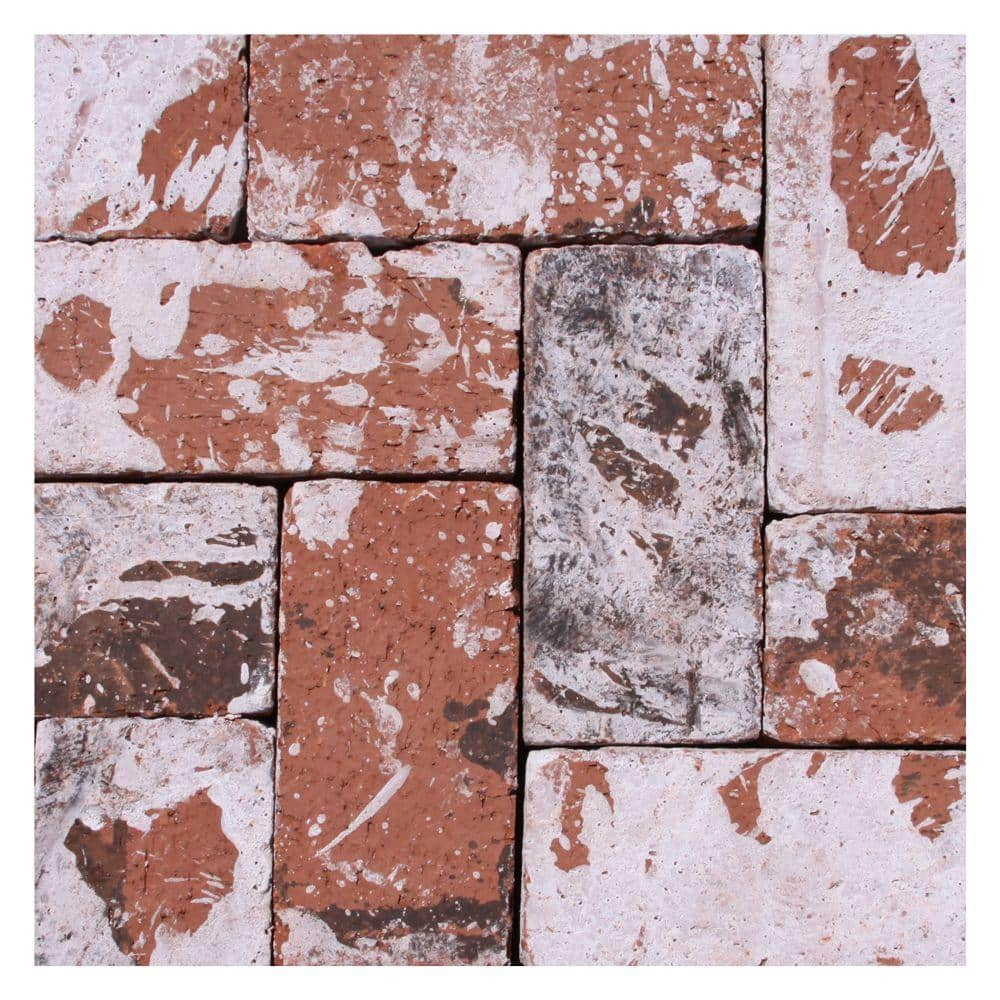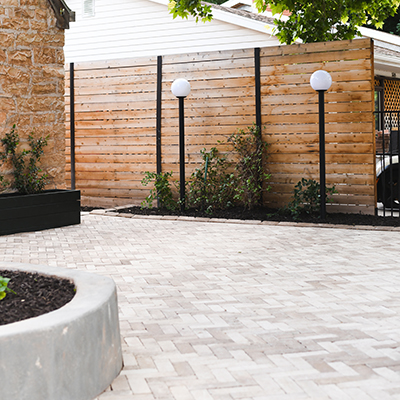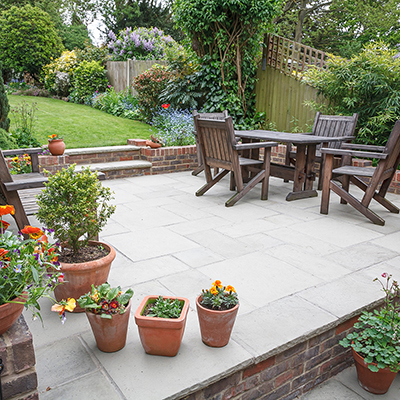Brick Patio Patterns Your Customers Will Love
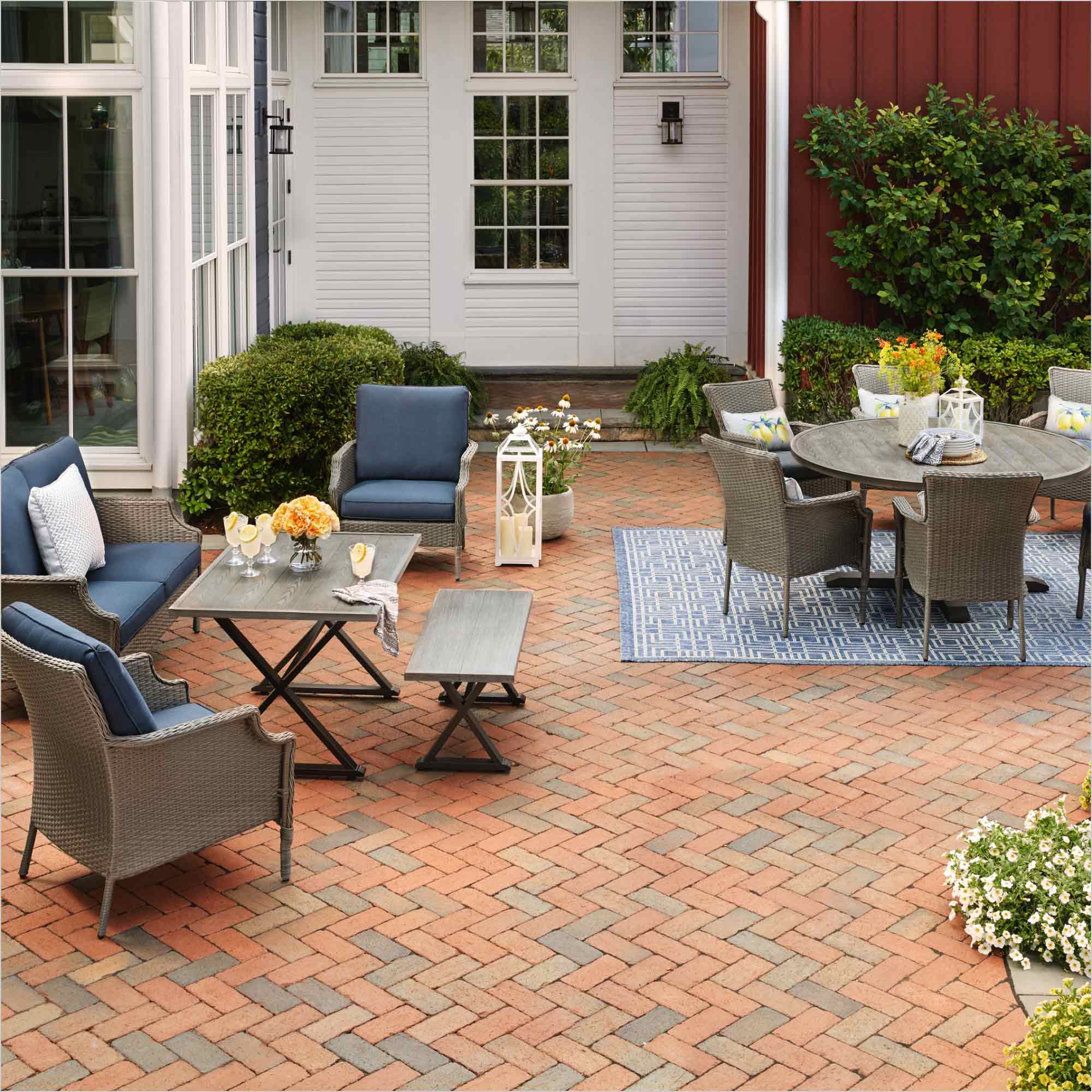
Last updated August 12, 2024
Brick patio patterns do more than showcase your client’s outdoor space. The best patterns hold bricks or pavers together to keep them from shifting underfoot. Simple patterns can be installed quickly, while complex ones can make a strong visual impact but will be more expensive and time-consuming.
This guide reviews brick patio patterns, how to install brick pavers and other items you should discuss with your customers when hardscaping their yards.
Table of Contents
What Is the Strongest Brick Pattern?
Running Bond Brick Pattern
Basketweave Brick Pattern
Other Brick Patio Patterns
How to Build a Brick Patio
Tips for Choosing Brick Patio Patterns
What Is the Strongest Brick Pattern?
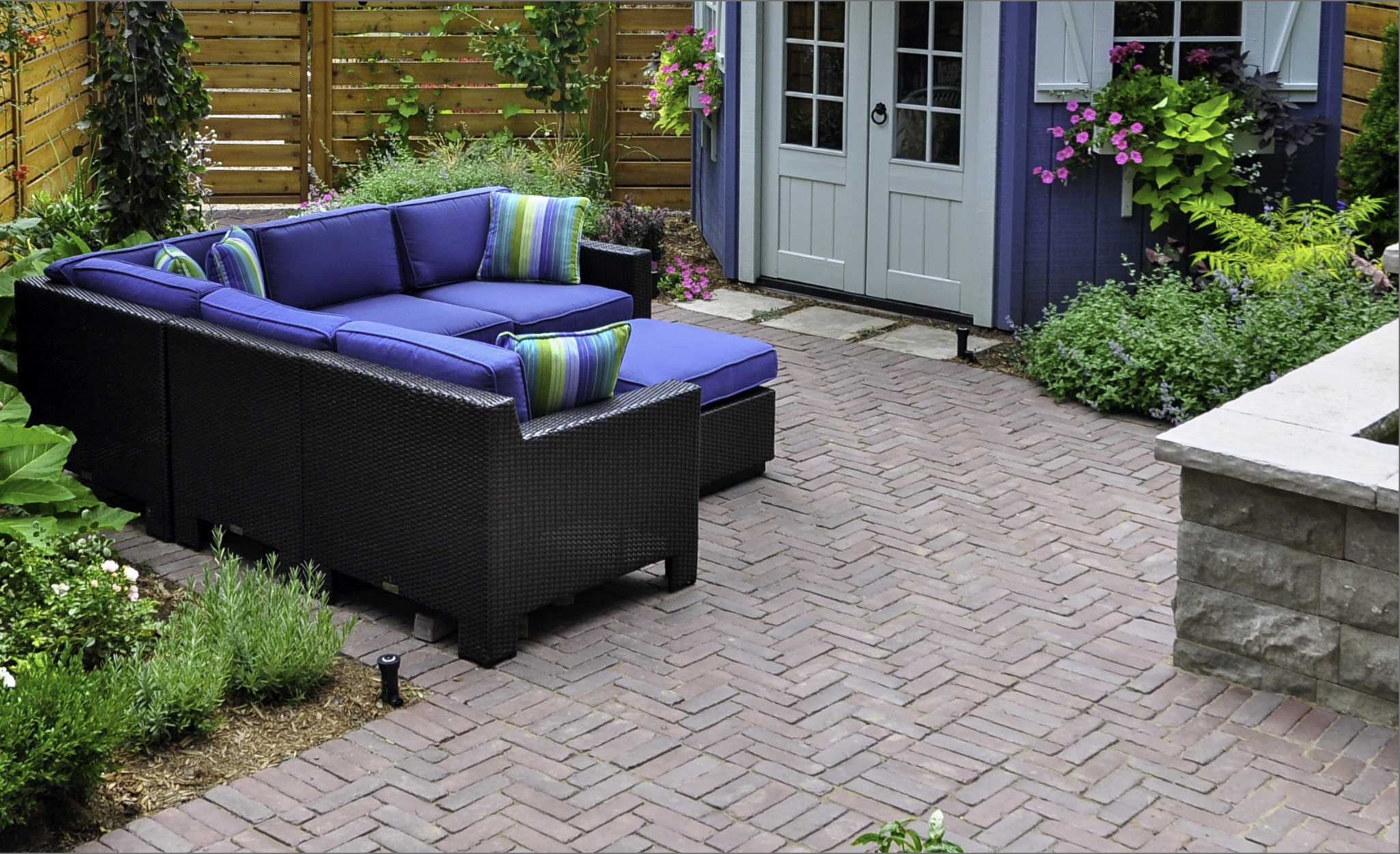
Herringbone is one of most popular brick patterns and is considered the strongest. The tight, interlocking design makes it ideal for the heavy-duty demands of driveways.
Named for its resemblance to a herringbone fabric weave, the pattern consists of bricks arranged in an overlapping zig-zag arrangement at 90-degree angles.
Herringbone patterns require bricks to be cut to make straight lines at the borders, which can make installation more expensive.
Pro Tip: Herringbone is popular in brick walkway patterns. The bricks can be arranged so the angles point in the desired direction of foot traffic.
Running Bond Brick Pattern
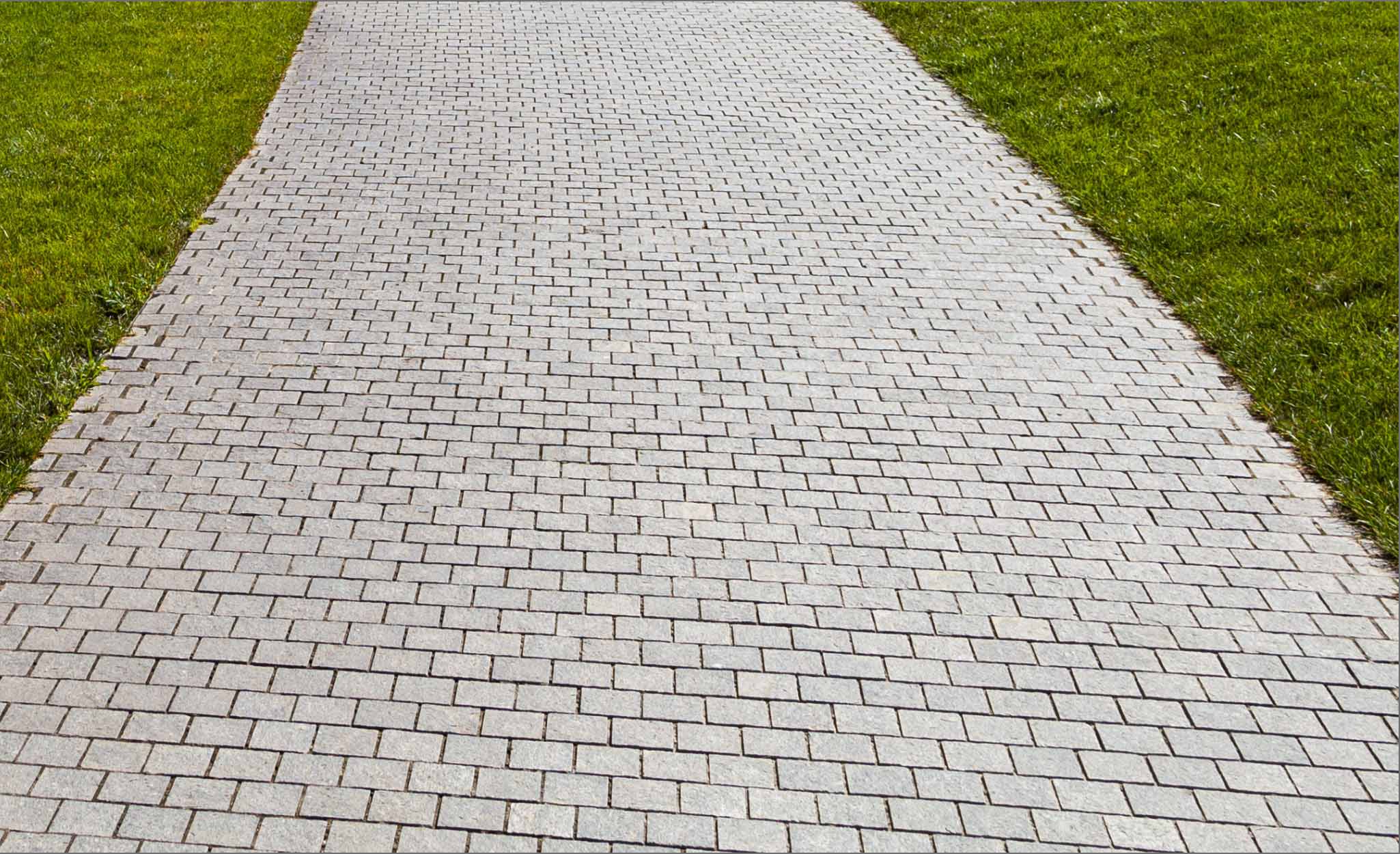
The running bond brick pattern, also called stretcher bond, is commonly used in brick walls but also suits paving patios and walkways. In this pattern, bricks are placed end on end in parallel rows. The joints fall in the middle of the brick on the next row.
Running bond is a sturdy pattern good for withstanding heavy patio furniture. It’s easy to install and requires only minor cuts at the borders.
The stacked bond brick pattern, also called jack-on-jack, is similar to running bond except the bricks are all aligned. It’s the simplest brick pattern and is not as tight as running bond.
Basketweave Brick Pattern
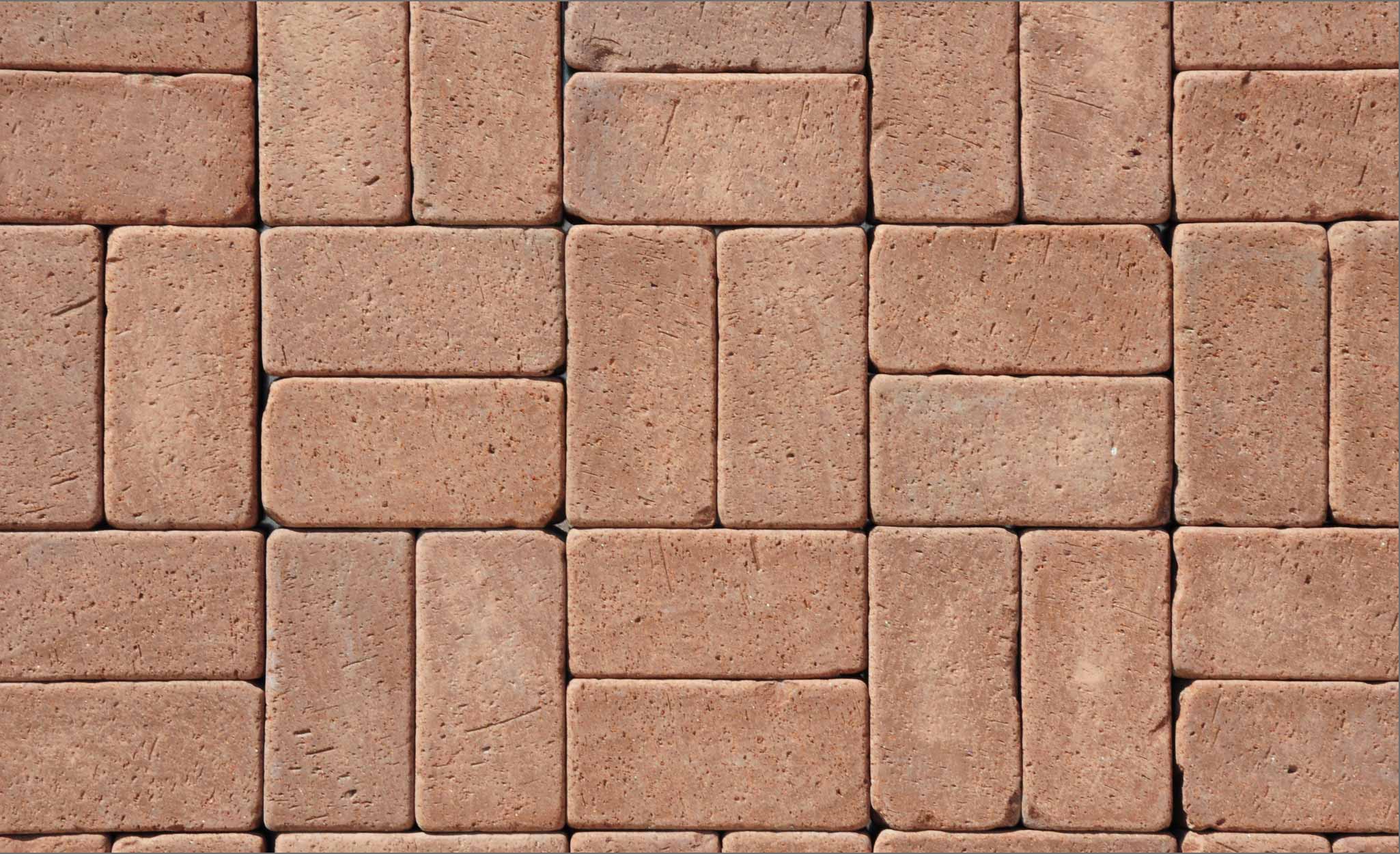
As the name suggests, the basketweave style resembles the pattern of a woven basket. In this style, pairs of bricks are arranged at right angles to each other. It offers more visual interest than running bond or stacked bond.
The half basketweave is similar but arranges a pair of bricks perpendicular to a single brick, rather than two pairs.
Other Brick Patio Patterns
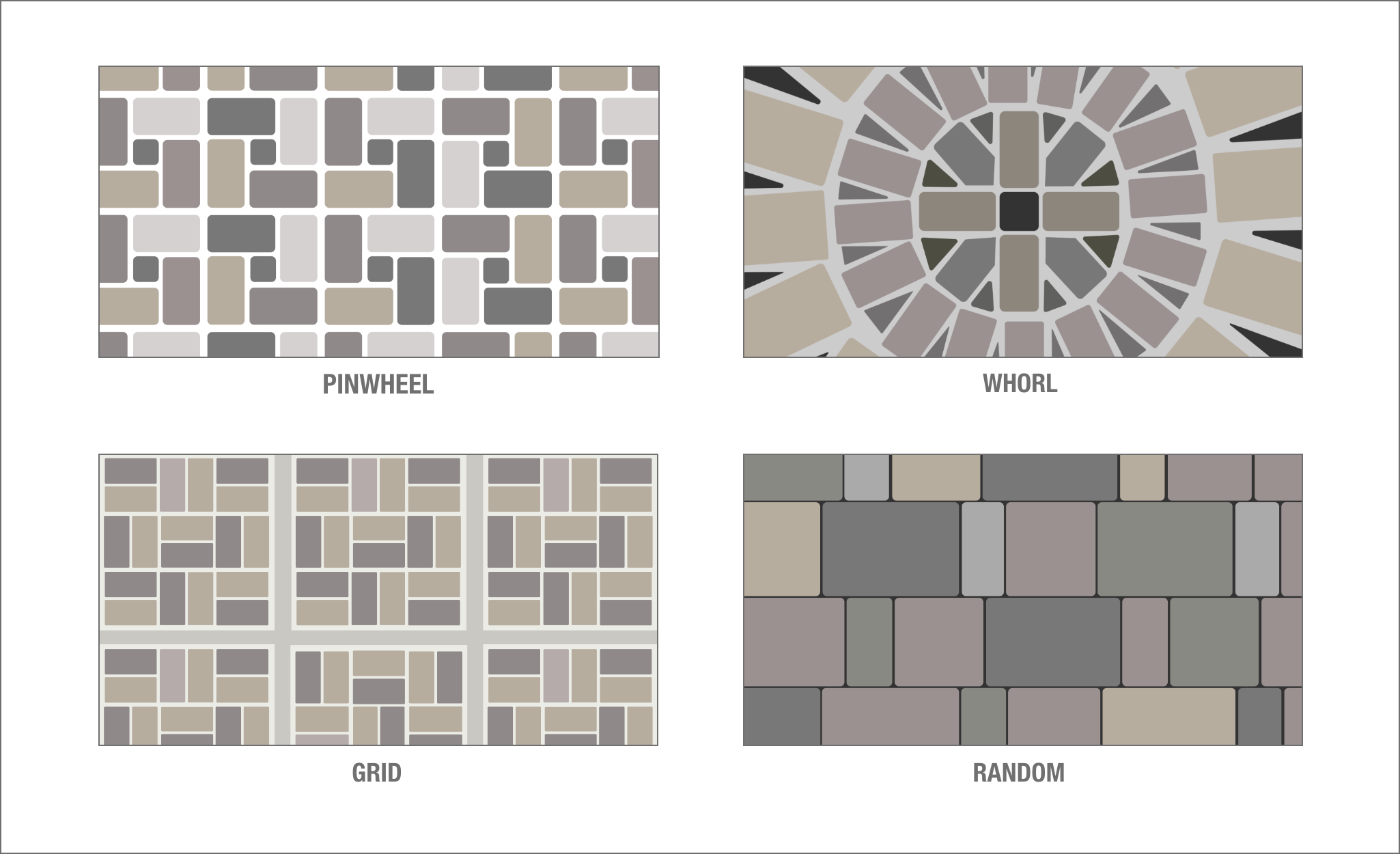
Other brick patio patterns are more complex, making them take longer and cost more to install.
- Pinwheel patterns arrange bricks in squares with a half-brick in the center, roughly imitating a pinwheel design.
- Whorled patterns usually arrange bricks in concentric rings. This is especially effective with circular patios or when your customer wants to draw attention to a central feature, such as a fire pit. Whorled patterns can be intricate, impressive and the most time-consuming to install.
- Grid patterns divide the patio into square sections, often using wooden frames, and then arrange bricks within them in different patterns. For example, a patio may have a grid of basketweave patterns.
- Random patio patterns are less regular or structured than standard patio patterns and often incorporate different sized or shaped bricks or pavers.
How to Build a Brick Patio
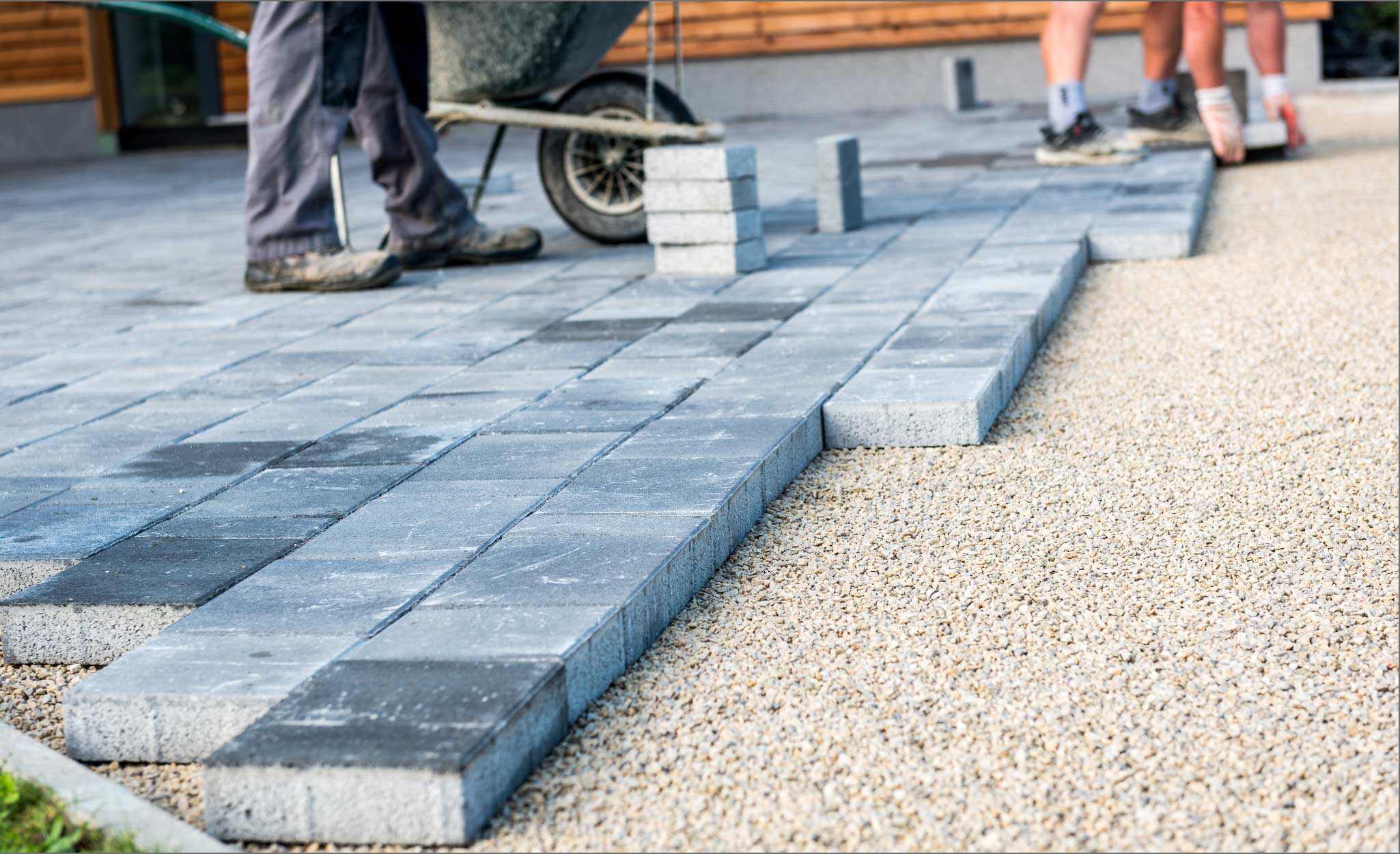
Follow these steps when installing a patio of bricks or pavers.
- Make sure local building codes allow brick patios and acquire permits if necessary.
- Determine the location and shape of the patio. Make sure the patio has 1-2 inches of slope to ensure water runoff. Make sure water runs away from both the patio and the home’s foundation.
- Mark the site edges with mason’s lines and drive stakes at the corners.
- Excavate the area to a depth of 8 inches and compress the soil with a tamper or plate compactor.
- Add a gravel base of 4 inches. Use a landscaping rake to ensure the base has an even surface and tamp down.
- Lay down landscape fabric.
- Install a border or edging of lumber or pavers. When laying pavers on end, make sure the edges of the base are dug deep enough that they don’t stick too high up.
- Pour 2 inches of sand over the fabric and level the surface with a board.
- Lay the first row of bricks, starting in one corner and following your chosen pattern. Press the bricks into the sand and place them as close together as possible. Strike bricks with a rubber mallet to ensure firm placement.
- Lay the remaining bricks one row at a time until the patio is complete. Do not kneel directly on the bricks, which can shift or dislodge them.
- Spread polymeric sand over dry bricks. Use a push broom to sweep the sand until the cracks between bricks are filled. Clear the surface of the pavers and use a garden hose to spray a light mist over the area to activate the bonding agent.
Pro Tip: For additional information, refer to the guide How to Install Patio Pavers.
Tips for Choosing Brick Patio Patterns
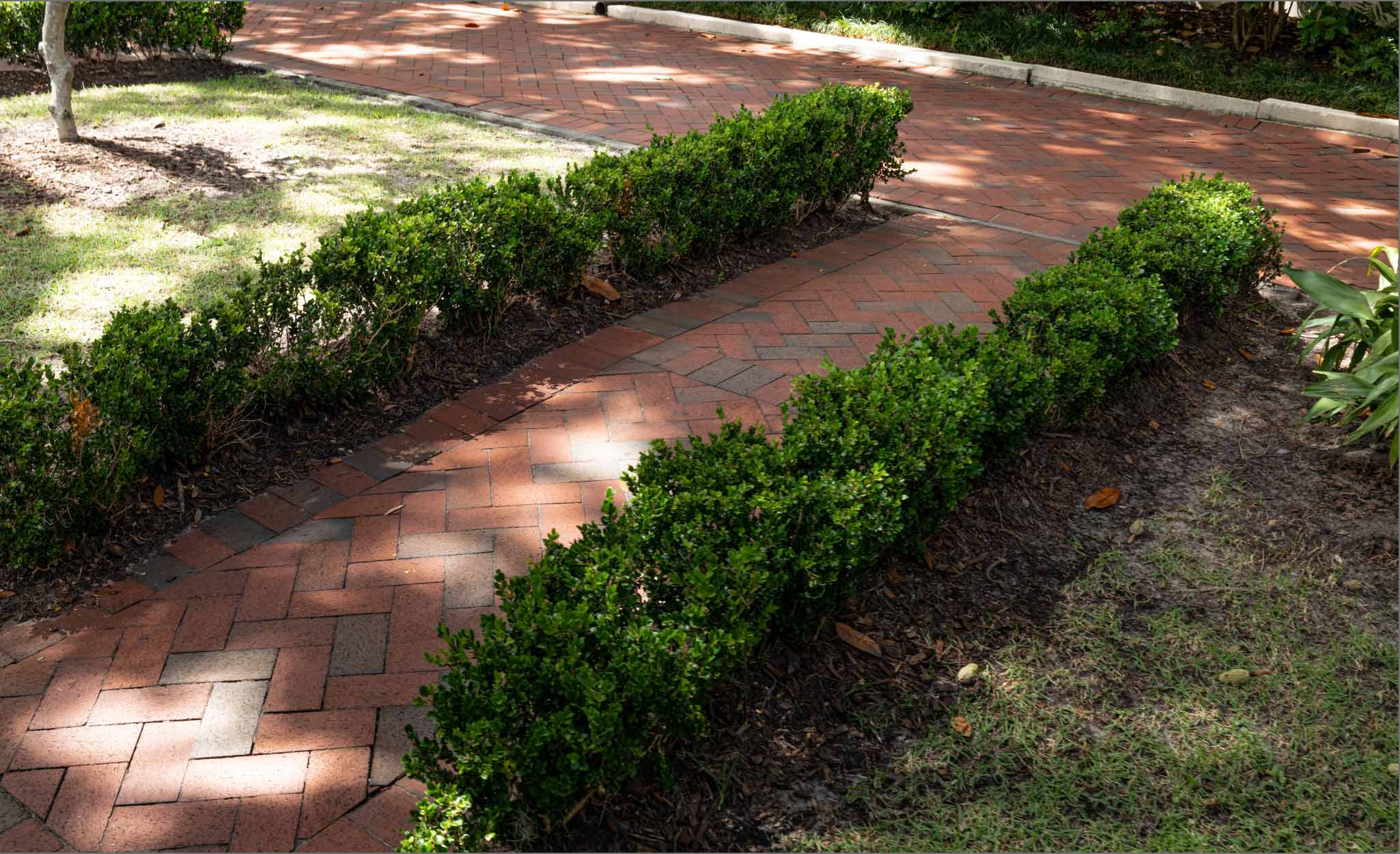
Consider these tips for your clients when choosing brick laying patterns and installation.
- When cutting bricks on site, consider renting a concrete saw or other cutting tool.
- Bricks used in driveways or other applications with heavy loads must be at least 3 inches thick.
- Labor and installation costs can vary based on the size and shape of patio, such as whether the yard has a slope or obstructions to be worked around. Obstructions can include trees and water features.
- Patterns with multicolored bricks offer visual appeal. Prices for colored bricks vary based on such factors as their firing technique. Bricks with specialized colors cost more and are more expensive to replace.
More Tools. More Products. More Perks.

Be more competitive and boost your bottom line with Pro Xtra, The Home Depot's loyalty program built for Pros. Sign up today to access the enhanced Pro Online Experience, built with the online business tools and time-saving features Pros need.
Rely on our tool and large equipment rental when building patios, walkways and other hardscaping jobs.
